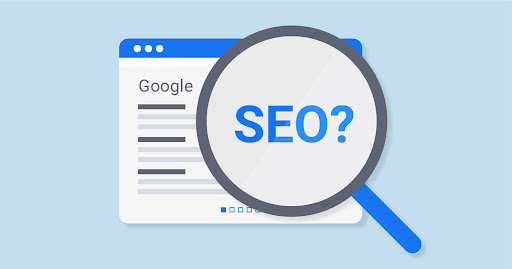It wouldn’t be wrong to say that eCommerce has revolutionalized the shopping industry as we know it. Shoppers accustomed to roaming shopping malls and supermarket aisles are moving towards scrolling through eCommerce websites for their everyday purchases.
Whether you think about groceries, luxury items, or household essentials, online stores are a go-to option for today’s tech-savvy population. Believe it or not, eCommerce is expected to become a $5.4 trillion industry in 2022 and makeup 21% of worldwide retail sales by 2024.
With more customers entering the eCommerce world, the competition to grab their attention is more challenging than ever before. So if you’re looking for Shopify hacks for organic Shopify growth, you should follow these strategies in 2022.
Table of Contents
1. Introducing Social Commerce
Social media is no longer a mere hub that lets people connect. Instead, it has become a breeding ground for businesses trying to capture leads and attract potential customers.
Whether you start by adding your Instagram feed to your Shopify store or run Snapchat’s shoppable ads campaign, you have to get the word out about your store on social media.
Rather than just displaying your products and creating relevant content, you have to provide a portal for target customers to shop directly through these platforms. This process combines appealing content with easy checkout options, which help you convert your leads there and then.
For example, Instagram’s shoppable product guides let your viewers connect to your product and speed up the decision-making process through integrated checkout carts.
Another evident example of this Shopify growth trend is the #TikTokMadeMeBuyIt!. TikTok’s commendable social commerce program in collaboration with Shopify, this venture lets retail store owners ad a buy button to their TikTok profiles.
Besides that, TikTok also lets owners embed product links within their posts to ease the checkout process for customers. With thousands of eyes glued to social media platforms every minute, social commerce is a growth trend you should learn to adapt to in 2022.
2. Improving SEO

Another critical strategy to target Shopify growth in 2022 is to improve the search engine optimization of your store. With an increasing number of shoppers turning to online platforms for everyday essentials and luxury goods, your brand needs to be visible on the internet.
When investing in SEO, your final goal should be to bag a place in major search engines’ top 10 search results. These include Bing, Yahoo, and Google. By ranking high on these search engines using effective SEO techniques, you can direct much organic traffic towards your store and increase sales.
If you’re wondering how to invest in SEO techniques to achieve growth and ROI for your Shopify store, there are various ways. For example, you can conduct thorough keyword research and include them on your website. Then, you can use these keywords on your website pages, product descriptions, URLs, and, most importantly, blog posts.
Besides that, ensuring a good user experience on your website by applying accessible navigation techniques and clearing the clutter will help your website rank high on search engines. Similarly, adding backlinks to resourceful materials and reputable websites is also a great way to improve SEO.
Adding these bells and whistles to your website ensures that you show up whenever someone searches for a term related to your niche.
Remember, good SEO techniques require consistency and diligence until they pay off. Look out for case studies of popular products and brands to see what helped them improve their SEO and achieve high rankings on search engines.
2. Integrate Voice Search
Once you increase your visibility on search engines by improving SEO, all you have to wait for is a potential customer to type in their query. However, believe it or not, not all customers are up for typing their searches manually on search engines anymore.
More than 71% of today’s customers prefer to use voice searches to get what they want on the internet. Let’s face it, nothing beats saying ‘Hey Siri’ or ‘Hey Google’ and having your results manifest in front of you within seconds.
Even though it seems like it, our laziness is not the core reason for the recent advancement in voice search technology. Instead, the market speculated to reach around $27.3 billion by 2030, has also been fueled by the no-touch concepts from the pandemic.
If you want to capitalize on this advancement and bring in more traffic to your eCommerce store, then adding a voice search feature should be next in line of action.
If you’re looking for Shopify hacks, platforms like Phebi let you integrate voice searches into your store without any hassle. This helps you ease your shopping and checkout experience and helps speed up the decision-making process of your visitors.
2. Add Personalized Touches

Have you ever stepped into a shopping mall looking for a blue cotton shirt and got frustrated when you didn’t find the specific product anywhere?
Guess what, you’r not alone. Almost every customer has a specific product in their mind when they begin shopping. With each customer having different choices and demands, adding a personalized touch to your store should be your next Shopify growth strategy.
The best way to do this is by organizing your online store effectively so that each customer finds what they need from the products available on your website. For example, through personalized search filters, a customer can easily specify the color, size, and material of the shirt they want and immediately purchase it.
Moreover, you can add a short survey form on your landing page for customers who have something specific in mind. Ask them what they are looking for so that you can narrow down the choices and make things easier for them.
Similarly, adding personalization to emails, messages, and pop-up ads is a great way to make the customer feel valued and appreciated. Remember, by personalization; we don’t simply mean adding the user’s name on the subject line.
Instead, you can use AI to segment your customers according to their interaction with your brand. Afterward, you can approach them with relevant products, offers, and content to lure them towards that buy button.
Platforms like Tada let you create personalized, gamified pop-ups which you can use to reduce cart abandonment and improve the user experience on your website.

5. Using Augmented Reality
With customers looking for every other item they need on the internet, the eCommerce world is no longer restricted to clothing and gadgets. Instead, even if you’re selling furniture, bedding, or hardware, you can take your business online and increase your sales.
But, the biggest obstacle in every customer’s decision-making process is wondering whether the product will work for them. For example, if you find a sofa you like in an eCommerce store, it fits your budget, but will it fit into your living room? Most stores mention the dimensions of their products, but that’s not always enough to give your customers a clear perspective.
Enter augmented reality. This new technology is currently on the roll in the eCommerce world and is helping customers worldwide experience the products before they buy them through AI.
What’s more, it is predicted that the number of AR users will rise to 3.5 billion in 2022. Major brands like Nike and Sephora are also jumping on the bandwagon by using augmented reality to showcase their products.
IKEA PLACE is an app created by the renowned home supplies store where customers can check for a piece of furniture. The customer can take a picture of their room, and the app will provide recommendations accordingly.
Another excellent example is India-based Lenskart, a platform that lets customers see how their frames look on their faces through their website using augmented reality. So if you’re targeting Shopify growth in 2022, augmented reality is the go-to solution.
6. Providing Live Shopping Experiences
Increasing sales through social media and leveraging influencer marketing are rising eCommerce trends in 2022. Using both techniques to your advantage, you can provide your customers with live shopping experiences and increase conversions while building a fanbase around your brand.
Live shopping sessions work in a simple way. Influencers affiliated with your brand organize Livestream sessions where they talk about your products and their experience using them. Viewers participating in the live session can ask questions about the product and even purchase it during the Livestream.
This creates an immersive shopping experience where customers can get a clear perspective of the product before buying it. Viewers planning to buy the product can get to know about any pros and cons regarding the option to avoid disappointing purchases. Everyone wins.
Additionally, it mimics the experience of in-store shopping, where the customer can feel the product and interact with the seller. If you’re looking for Shopify hacks to increase conversions, implementing this strategy is a must in 2022.
Final Words
To devise the right Shopify growth strategy, you’ll have to stay in terms with what is trending in 2022. As a rule of thumb, you should try to put your brand out there and build trust in your customers to choose your eCommerce store over other in-store shopping options.
Apart from building trust through social proof and influencer marketing, you should try to mimic the in-store shopping experience through personalization and AI integration. To nail these Shopify hacks, you can find many apps and plug-ins on the Shopify store to achieve your goals.
Also read: How To Level Up Your Marketing Plan in 2022

